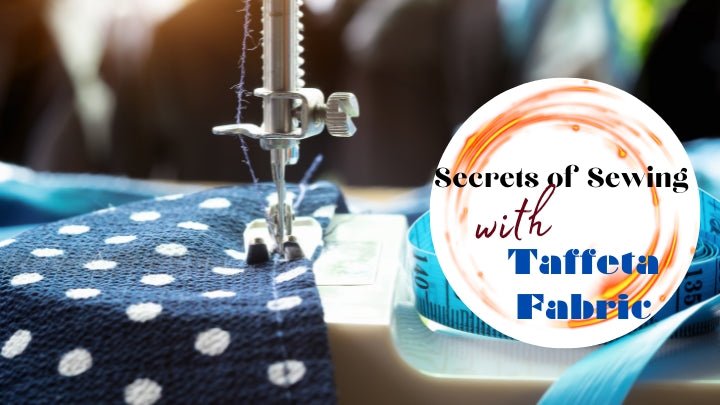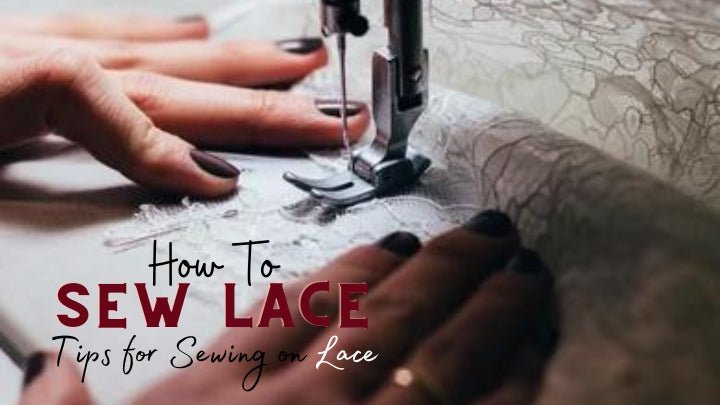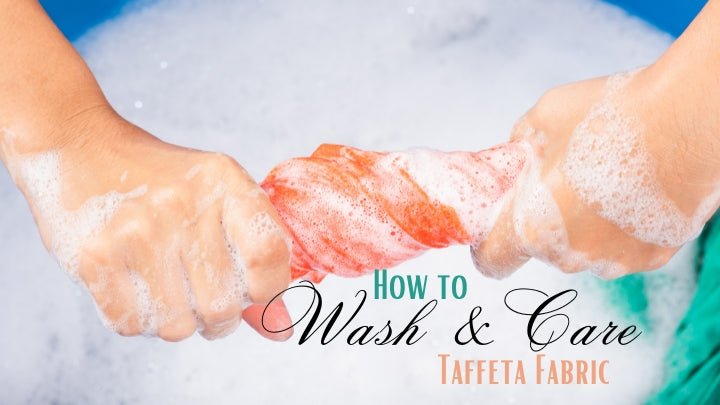Taffeta fabric is a luxurious and elegant material that has been popular for centuries for its smooth, shiny surface and crisp texture. This versatile fabric is often used for creating stunning evening gowns, bridal wear, and formal attire. However, working with taffeta can be a daunting task due to its unique characteristics.
How to Sew Taffeta Fabric?
Sewing with taffeta fabric can be both exciting and rewarding, but it requires some specific techniques to handle this luxurious material effectively.
If you're planning to make a dress in taffeta for your young children for the coming holiday season but aren't sure the best way to go about it, we've got you covered. Because taffeta fabric is commonly used to make wedding gowns and other evening wear dresses, we'd like to share some of the sewing tricks to sew it.
In this guide, beginners and experienced sewists alike will find essential tips, techniques, and best practices for sewing with taffeta, ensuring successful and stunning results. From selecting the appropriate tools and needles to mastering seams and finishes, you'll gain the confidence needed to create your own sophisticated taffeta creations.
Embrace the lustrous sheen and graceful drape of taffeta as you embark on this sewing adventure, elevating your skills to new heights and making the holiday season even more special with your handcrafted dress for your little ones. Get ready to sew with finesse and create enchanting taffeta masterpieces that will be cherished for years to come. Happy sewing!
Read on to find out more about What is Taffeta Used for?
Is Taffeta Fabric Hard to Sew?
Taffeta is generally considered a sturdy fabric, but its slippery surface can make sewing a bit more challenging. When working with taffeta, it is essential to take certain precautions to achieve the best results. One of the main challenges of sewing with taffeta is pushing dull pins through the fabric, which can lead to visible pinholes. To avoid this, always use new or sharp, fine sewing pins and pins only within the seam allowance to prevent visible marks on the final garment.
Handling its unraveling edges is the other most critical aspect of sewing with taffeta. To combat this, always finish the raw edges with appropriate techniques such as serging, pinking, or using bias binding. Taking extra care in handling taffeta will help prevent potential damage and ensure a professional-looking final product.
Discover even more about How To Wash And Care For Taffeta Fabric.
7 Tips for Sewing with Taffeta Fabric
1. Pre-washing
While taffeta doesn't require frequent washing, it is advisable to pre-wash the fabric before starting your project. This helps remove any sizing or chemicals that might be present and can also minimize potential shrinkage in the finished garment.
2. Cutting
Use weights to hold the taffeta fabric in place while cutting to avoid shifting. Cutting through several layers at once can also help maintain accuracy. Use sharp fabric scissors or a rotary cutter to ensure clean edges and prevent fraying.
3. Sewing Needle
Use a 70/10 or 80/12 Microtex needle when stitching taffeta for best results. A new needle is essential, as old, blunt needles can leave holes in the fabric and cause damage. Test your stitches on a scrap piece of taffeta before starting the sewing to ensure they are tight enough and prevent loose threads.
4. Thread Selection
What Thread is Best for Taffeta? Choose a high-quality, fine thread suitable for the delicate nature of taffeta fabric. A polyester or silk thread works well, providing strength and a smooth finish.
5. Seam Finishing
Taffeta tends to fray when cut, so finishing the seams is essential. You can use techniques like pinking, serging, or French seams to prevent fraying and add a clean and polished look to the garment's interior.
6. Pressing and ironing
When pressing taffeta, use a low to medium heat setting on your iron, and always place a pressing cloth between the iron and the fabric to avoid any direct contact. Press gently and avoid pressing over pins, as they can leave permanent marks.
Get the complete story on How to Ironing Taffeta Fabric?
7. Finishing touches
Taffeta fabric is commonly used for formal wear; paying attention to the final touches is essential. Try using understitching in order to keep the linings and facings in place, or employ hand-stitching techniques like slip stitching and blind hemming to create a neat and visible finish. Horsehair braid adds a strong edge to hems to give them a striking appearance and is simple to set up.
Faqs
What Size Sewing Machine Needle for Taffeta?
As mentioned earlier, a 70/10 or 80/12 Microtex needle is ideal for sewing with taffeta fabric. These needles have a slim, sharp point that can easily penetrate the fabric without causing snags or runs. Always opt for a new needle to ensure the best sewing performance and avoid damaging the delicate fabric.
Does Taffeta Fray When Cut?
Yes, taffeta fabric has a tendency to fray when cut, which is why finishing the raw edges of the fabric is crucial. Common seam finishing techniques like pinking, serging, or French seams can prevent fraying and create a neat appearance on the inside of the garment. Taking the time to properly finish the seams will ensure your taffeta project looks beautiful and stays intact over time.
How to Prevent Taffeta from Fraying?
Taffeta fabric has a tendency to fray, so it's essential to take measures to prevent this. To keep taffeta from fraying, consider the following tips:
- Use pinking shears
- Apply fabric glue
- Serger or zigzag stitch
- Lining
How do you know which side of the taffeta is right?
Taffeta fabric often has a noticeable sheen on one side, which is referred to as the right side. The duller side is considered the wrong side. To determine which side of the taffeta is the right side, look for the side with the higher luster or shine. If you are still uncertain, compare both sides under different lighting conditions to see which one reflects light more intensely.



